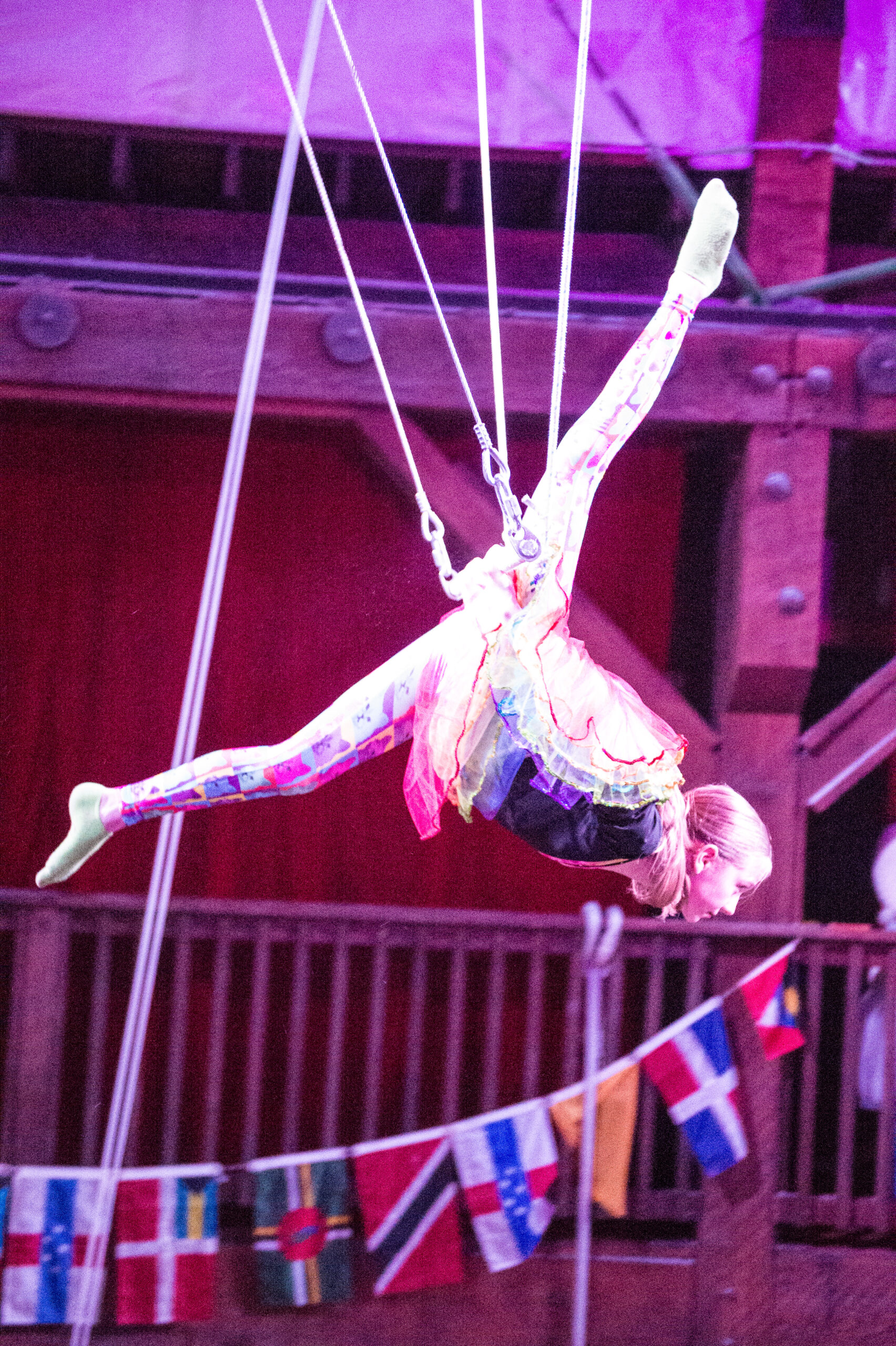What is Flying Trapeze?
What is Flying Trapeze?
Founded by the incredible Jules Leotard, Flying Trapeze brings together artistry, athleticism, and a whimsical sense of circus. Jules Leotard discovered Flying Trapeze while training at his father’s gymnasium. He strung up a cord and bar above the pool and practiced his newfound tricks.
Since the days of flying over a swimming pool, Flying Trapeze has evolved into one of the most famous circus acts. Performed by nearly every major circus production company, it reigns as one of the most impressive and awe inspiring acts.
Many people believe that learning flying trapeze is difficult and requires a tremendous amount of strength. Emerald City Trapeze makes learning trapeze easy and fun! We have had everyone from 6 to 89 years old take a swing on the flying trapeze. It requires much less strength, flexibility, and coordination than you might think! All students will be in a safety harness and assisted at all times by our incredible staff.
Common Flying Trapeze Terminology
- Listo/Lista – Ready: Used by the flyer and/or catcher to signify that they are holding the fly bar (for a flyer) or have built enough height in their swing for a catch (for a catcher) and ready to go.
- Ready – Used by the catcher to tell the flyer that they should leave the board momentarily. The flyer bends their knees and if executing a one-handed take-off, dips the bar so they can raise it higher when they jump off the board.
- Lining Up – Called from the board. When the person working the board for those who have not yet learned to retrieve and serve the bar themselves gives the flyer the fly bar. It really means that the flyer is “lining up” their trick.
- Hup / Hep – Signal to leave the board and/or the fly bar. Sometimes used by the catcher to tell the flyer to let go after a catch when landing in the net.
- First – Usually called by someone pulling safety lines when tricks are being thrown to the net. It is used for front-end tricks to signify getting to the first position.
- Final – Also usually called by one pulling safety lines. It is used for front-end tricks to signify getting to the final position.
- Gotcha – Some catchers say “Gotcha!” when they catch to signify that they have a good grip on the flyer and that the flyer can let go of the fly bar.
- Catch Trap – The trapeze that the catcher swings on.
- Apron – The net in front of the catch trap. (The back apron is the net in back of the board.)
- Rise/Riser – A narrow board placed on the rungs of the ladder to allow the flyer to take off from a higher point.
- Noodle – The long pole used to reach the fly bar when the person working the board cannot reach it normally.
- Mount – When the flyer mounts the board after a return.
- Return – When the flyer, after a successful catch, manages to return to the fly bar, and often all the way back to the board. In professional shows, the flyers rarely come down from the board.
- Grips – Can be gymnastics grips or ones made out of tape. They are used to protect the flyer’s hands.
- Chalk – Used by the flyer and catcher to absorb wetness and to reduce sticking to things such as the fly bar.
- Force Out – Kicking the legs out at the peak of the flyer’s swing to gain height.
- Hollow – Comes right after the force-out. It is basically a neutral position.
- Sweep – Comes after “hollow”. Signifies kicking the legs back.
- Seven – The last part of a force-out swing. Flyer brings legs in front of them so they will not hit the board.
- Cutaway Bar – The bar that the catcher holds when the flyer executes tricks to the catcher such as normal Cutaways and Reverse Knee-Hangs.
Terms cited from Wikipedia

